Across All Classes
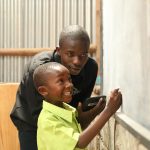 Teacher guides don’t just display lessons, they also record attendance and assessment scores and track lesson pacing and pupil comprehension in near real time thanks to our software.
Teacher guides don’t just display lessons, they also record attendance and assessment scores and track lesson pacing and pupil comprehension in near real time thanks to our software.
 Our smartphone application allows Academy Managers to seamlessly sync their academy’s tablets, pupil and teacher attendance, tuition payments, instructional monitoring, and more.
Our smartphone application allows Academy Managers to seamlessly sync their academy’s tablets, pupil and teacher attendance, tuition payments, instructional monitoring, and more.
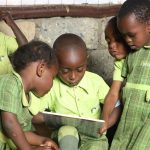 Storybooks are locally developed using characters and situations with which pupils can relate. We have a range of storybooks for every class from Nursery to Upper Primary.
Storybooks are locally developed using characters and situations with which pupils can relate. We have a range of storybooks for every class from Nursery to Upper Primary.
 Homework books provide pupils with a review of their day’s lessons, a place to do their homework, and a way to show their parents what they’ve learned and how much they’ve progressed.
Homework books provide pupils with a review of their day’s lessons, a place to do their homework, and a way to show their parents what they’ve learned and how much they’ve progressed.
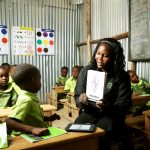 Acronyms, signals, and other non verbal communications for classroom routines enforce positive behavioural management. We also use a variety of instructional songs.
Acronyms, signals, and other non verbal communications for classroom routines enforce positive behavioural management. We also use a variety of instructional songs.
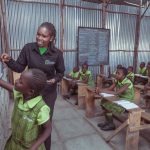 We provide all early childhood development pupils with slates. These miniature chalkboards allow pupils to practice writing without the need for paper, which can be cost-prohibitive to parents.
We provide all early childhood development pupils with slates. These miniature chalkboards allow pupils to practice writing without the need for paper, which can be cost-prohibitive to parents.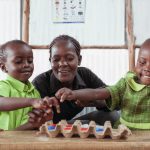 Coloured counters, which are essentially bottle caps and their plastic rings, are used to teach colour recognition, fine motor skills, counting, and other basic mathematical concepts.
Coloured counters, which are essentially bottle caps and their plastic rings, are used to teach colour recognition, fine motor skills, counting, and other basic mathematical concepts. Repurposed egg cartons serve as ten frames, grounding pupils in early counting skills in base 10 and explaining concepts like counting, addition, subtraction, and even fractions in a natural setting.
Repurposed egg cartons serve as ten frames, grounding pupils in early counting skills in base 10 and explaining concepts like counting, addition, subtraction, and even fractions in a natural setting.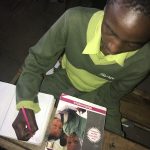 Class workbooks are custom-made to match what the teacher is writing on the board so that early childhood development pupils can colour, trace, and complete patterns while they gain fine motor skills.
Class workbooks are custom-made to match what the teacher is writing on the board so that early childhood development pupils can colour, trace, and complete patterns while they gain fine motor skills.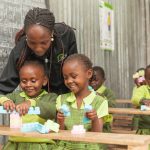 Additional educational toys, such as building blocks, lacing cards, puzzles, and paper dolls, are routinely used to help pupils develop fine motor skills and reinforce class content.
Additional educational toys, such as building blocks, lacing cards, puzzles, and paper dolls, are routinely used to help pupils develop fine motor skills and reinforce class content.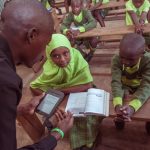 Two complimenting books offer fiction and non-fiction stories. Together, they teach pupils phonics in addition to reading comprehension, interpretation, analysis, and problem solving, too.
Two complimenting books offer fiction and non-fiction stories. Together, they teach pupils phonics in addition to reading comprehension, interpretation, analysis, and problem solving, too.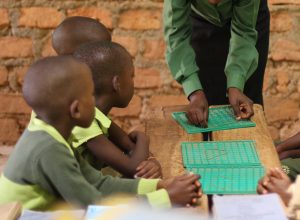 Geoboards allow pupils to perform complex algorithms, such as multiplication, division, fractions, plane geometry, and even basic algebra, simply by shifting a rubber band on a 10 × 10 grid.
Geoboards allow pupils to perform complex algorithms, such as multiplication, division, fractions, plane geometry, and even basic algebra, simply by shifting a rubber band on a 10 × 10 grid.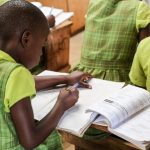 These classes help pupils understand the language, problem types, and test taking strategies needed to pass important national exams.
These classes help pupils understand the language, problem types, and test taking strategies needed to pass important national exams.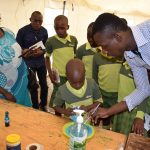 Science kits, containing compasses, weather instruments, magnifying glasses, soil samples, plastic containers for experiments, and more, give pupils another opportunity to learn by doing.
Science kits, containing compasses, weather instruments, magnifying glasses, soil samples, plastic containers for experiments, and more, give pupils another opportunity to learn by doing. Maps allow pupils to see firsthand how the world is laid out. They start by studying the world as a whole, but eventually learn to map their own communities and academies.
Maps allow pupils to see firsthand how the world is laid out. They start by studying the world as a whole, but eventually learn to map their own communities and academies.